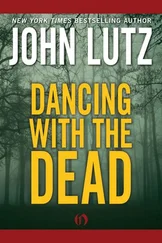John Wohlstetter - Sleepwalking with the Bomb
Здесь есть возможность читать онлайн «John Wohlstetter - Sleepwalking with the Bomb» весь текст электронной книги совершенно бесплатно (целиком полную версию без сокращений). В некоторых случаях можно слушать аудио, скачать через торрент в формате fb2 и присутствует краткое содержание. Город: Seattle, Год выпуска: 2012, ISBN: 2012, Издательство: Discovery Institute Press, Жанр: История, military, Политика, Публицистика, на английском языке. Описание произведения, (предисловие) а так же отзывы посетителей доступны на портале библиотеки ЛибКат.
- Название:Sleepwalking with the Bomb
- Автор:
- Издательство:Discovery Institute Press
- Жанр:
- Год:2012
- Город:Seattle
- ISBN:978-1-93659-906-6
- Рейтинг книги:3 / 5. Голосов: 1
-
Избранное:Добавить в избранное
- Отзывы:
-
Ваша оценка:
- 60
- 1
- 2
- 3
- 4
- 5
Sleepwalking with the Bomb: краткое содержание, описание и аннотация
Предлагаем к чтению аннотацию, описание, краткое содержание или предисловие (зависит от того, что написал сам автор книги «Sleepwalking with the Bomb»). Если вы не нашли необходимую информацию о книге — напишите в комментариях, мы постараемся отыскать её.
RICHARD PERLE, Resident Fellow, American Enterprise Institute and Assistant Secretary of Defense, 1981–1987 Sleepwalking with the Bomb
Sleepwalking with the Bomb — читать онлайн бесплатно полную книгу (весь текст) целиком
Ниже представлен текст книги, разбитый по страницам. Система сохранения места последней прочитанной страницы, позволяет с удобством читать онлайн бесплатно книгу «Sleepwalking with the Bomb», без необходимости каждый раз заново искать на чём Вы остановились. Поставьте закладку, и сможете в любой момент перейти на страницу, на которой закончили чтение.
Интервал:
Закладка:
In 1962 the first “Single Integrated Operational Plan” (SIOP)—a comprehensive war plan covering all forces and how they would be used—was presented by military chiefs to President Kennedy. He and McNamara were horrified. It envisioned a massive nuclear strike to obliterate Russia, which surely would have led to reciprocal obliteration of the United States—reflecting the attitude of the leader of the Strategic Air Command, General Thomas Power, who quipped: “Look, at the end of the war, if there are two Americans and one Russian, we win!”
Superpower leaders who held the power of final decision were not flippant. In his study of superpower nuclear affairs, The Dead Hand , David Hoffman notes that Richard Nixon was similarly aghast when he saw the 1969 SIOP, with some 90 variations on the apocalypse. In 1972 Soviet dictator Leonid Brezhnev played in a nuclear war game in which it was assumed that a U.S. first strike had killed 80 million Russians and demolished 85 percent of Soviet industry, as well as leaving the military with a thousandth of its original striking power. Asked to launch three dummy Soviet ICBMs as part of the exercise, a shaky Brezhnev asked his defense minister, “Are you sure this is just an exercise?”
Ronald Reagan, whose political opponents portrayed him as a nuclear cowboy, was equally unnerved when, two months after assuming office, he received a detailed briefing on presidential nuclear command and control matters. In Reagan’s Secret War, longtime policy advisers Martin and Annelise Anderson quote from President Reagan’s diary entries:
The decision to launch the weapons was mine alone to make.
…The Russians sometimes kept submarines off our East Coast with nuclear missiles that could turn the White House into a pile of radioactive rubble within eight minutes.
Six minutes to decide how to respond to a blip on a radar scope and decide whether to unleash Armageddon!
How could anyone apply reason at a time like that?
…A nuclear war couldn’t be won by either side. It must never be fought. But how do we go about trying to prevent it and pulling back from this hair-trigger existence? (Emphasis in original.)
As recounted by the Andersons, on September 25, 1983, Lieutenant Stanislav Petrov, the duty officer on watch, decided to ignore an alarm showing five U.S. ICBMs headed for Russian soil. The Soviet command protocol dictated immediate launch on warning, but Petrov ignored the rule book, figuring that a real American attack would involve more than five missiles. It turned out that the Soviet satellite had misread sunlight glinting off clouds over a U.S. missile site. This amazing near-Armageddon—turning on one mid-level officer’s instant judgment—underscored the wisdom of nuclear doctrine calling for an ability to absorb a surprise first strike, with an assured second-strike response. But Soviet forces were concentrated in land-based offensive missiles, and thus more vulnerable to a first strike: the U.S. had a greater share of its forces based at sea, better able to ride out a surprise attack. The Soviets’ posture of relying primarily on the most accurate silo-killing missiles despite their own greater vulnerability suggests that the Soviets valued the ability to threaten U.S. forces more than they feared a U.S. first strike.
Reagan entered office in 1981 stating publicly that the Soviets enjoyed strategic nuclear superiority. Yet Hoffman notes that Reagan concluded by late 1983 that Soviet fears of a U.S. first strike were not made up. Reagan wrote in his memoirs:
Three years had taught me something surprising about the Russians: Many people at the top of the Soviet hierarchy were genuinely afraid of America and Americans. Perhaps this shouldn’t have surprised me, but it did. In fact, I had difficulty accepting my own conclusion at first.
Lieutenant Petrov was not the only Soviet officer to decline to fire missiles upon instrumental signals showing an attack, and U.S. officials behaved in similar fashion in refusing to launch on signal warning. Put simply, both sides desired to survive and worked hard to avoid accidental Armageddon.
Reagan had in fact declared war against the Soviets, but not a shooting, let alone nuclear one. In 1983 he issued a presidential directive for conducting what amounted to political and economic war against the “evil empire.” It sought to aggravate internal political pressures against the Soviet regime, and subject it to increasingly severe economic straits as well.
Paul Nitze wrote in 1956 about the role of nuclear weapons in the Cold War beyond deterring a war or waging one, using Russian chess prowess as metaphor: “The atomic queens may never be brought into play. But the position of the atomic queens may still have a decisive bearing on which side can safely advance a limited-war bishop or even a cold-war pawn.”
Nitze’s assessment reinforces the lesson of this chapter: ARMS CONTROL CANNOT BE VIEWED AS SUPREME IN RELATIONS WITH ADVERSARIES. The full spectrum of an adversary’s conduct must be taken into account in formulating policy.
4.
AMERICA: THE LIMITS OF WHAT ARMS PACTS CAN ACCOMPLISH
We may be likened to two scorpions in a bottle, each capable of killing each other, but only at the risk of his own life.
J. ROBERT OPPENHEIMER, 1953AMERICAN ARMS CONTROL AGREEMENTS DATE BACK TO THE EARLY days of the American republic. The first U.S. arms agreement, the Rush-Bagot Treaty with Great Britain, was signed after the War of 1812 and limited armaments on the Great Lakes and Lake Champlain. (Each side got one or two 100-ton vessels carrying a cannon with an 18-pound shell.) In 1871 the U.S. and Great Britain signed the Treaty of Washington, which called for complete demilitarization along the U.S.-Canadian border. The agreement has been periodically modified and is still in force.
In the two centuries since Rush-Bagot, and in particular in the last 40 or so years as nuclear arms agreements have been reached, the United States has had ample opportunity to see what types of agreements, signed in what circumstances, are effective. It is in the months and years after agreements are signed that the Second Lesson of nuclear-age history emerges: ARMS AGREEMENTS MUST BE BASED UPON GENUINE, NOT PRESUMED, COMMONALITY OF STRATEGIC INTEREST.
“Big Ships Cause Big Wars”: Arms Control before World War II
IT IS instructive to begin this consideration of nuclear arms agreements with a look at agreements preceding the development of nuclear weapons, following the First World War. The ghastly carnage in the trenches of Europe spurred calls for global disarmament. Fifteen million were dead—the “Lost Generation.” The Big Four victorious Allies—the U.S., Britain, France, and Italy—drew up the treaty, a spectacularly unsuccessful one. The harsh terms it imposed on Germany fueled the resentments of, among others, one Corporal Adolf Hitler. The boundary lines it laid down spawned wars in Europe, the Mideast, and Africa. The League of Nations it founded was totally ineffectual. The U.S. Senate rejected the Treaty of Versailles, keeping America out of the new organization and guaranteeing that its writ would be ignored worldwide. However, there is little reason to believe that things would have been different had the U.S. ratified the treaty—as shown by experience with the League’s successor, the United Nations.
But in the short term, the deep revulsion against war among the victorious Allies spurred further arms-control efforts. The modern idea of disarmament was an invention of liberal Western societies. Either adversaries were coerced to participate after a military defeat, or they voluntarily participated while pursuing secret strategic advantage. The 1922 Washington Naval Treaty set limits on naval ship size for the United States, Great Britain, France, and Japan. Three subsequent treaties (1930, 1935, and 1936) further limited ship sizes for the signatory powers. (Japan signed only the 1930 pact. Germany only the 1935 pact.) A regnant maxim of the day succinctly captured the idealism driving disarmament: “Big ships cause big wars, little ships cause little wars, and no ships cause no wars.” President Warren Harding, in presenting the treaty to the Senate for ratification, described the negotiation as “a conference of friends, proceeding in deliberation and sympathy, appraising their friendly and peaceful relations and resolved to maintain them.”
Читать дальшеИнтервал:
Закладка:
Похожие книги на «Sleepwalking with the Bomb»
Представляем Вашему вниманию похожие книги на «Sleepwalking with the Bomb» списком для выбора. Мы отобрали схожую по названию и смыслу литературу в надежде предоставить читателям больше вариантов отыскать новые, интересные, ещё непрочитанные произведения.
Обсуждение, отзывы о книге «Sleepwalking with the Bomb» и просто собственные мнения читателей. Оставьте ваши комментарии, напишите, что Вы думаете о произведении, его смысле или главных героях. Укажите что конкретно понравилось, а что нет, и почему Вы так считаете.












